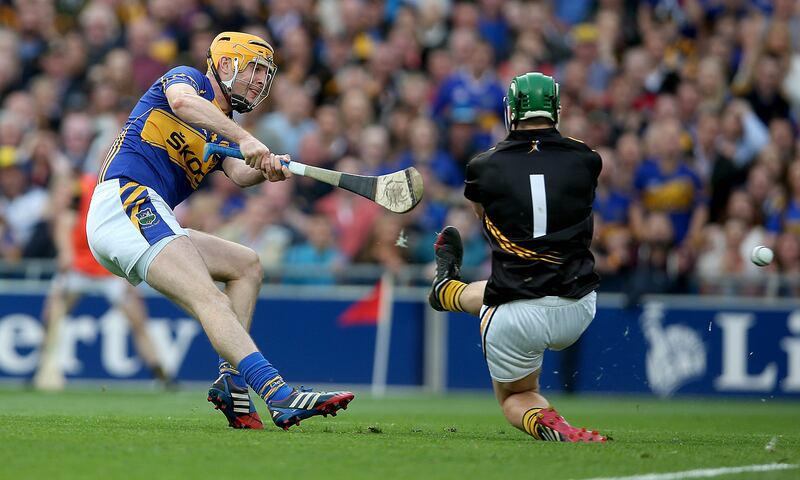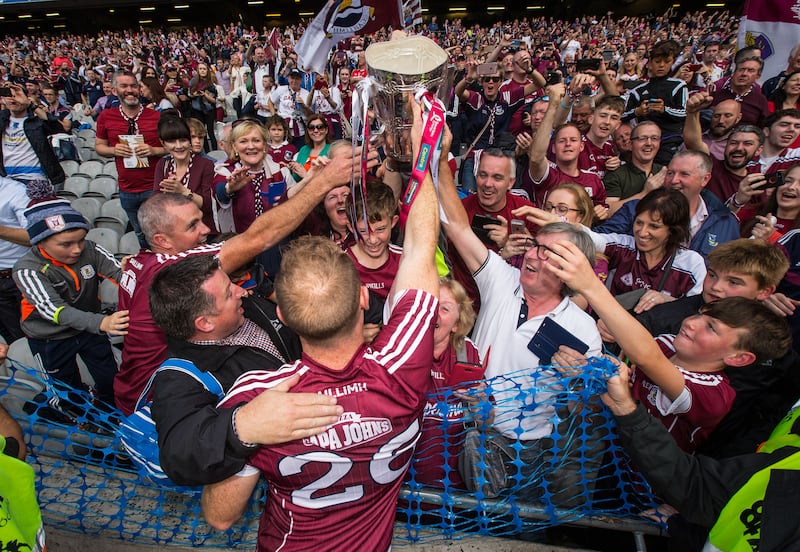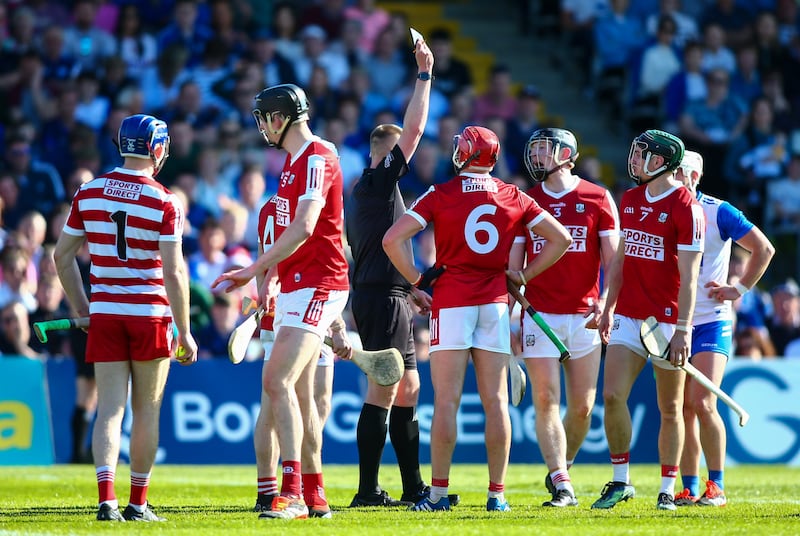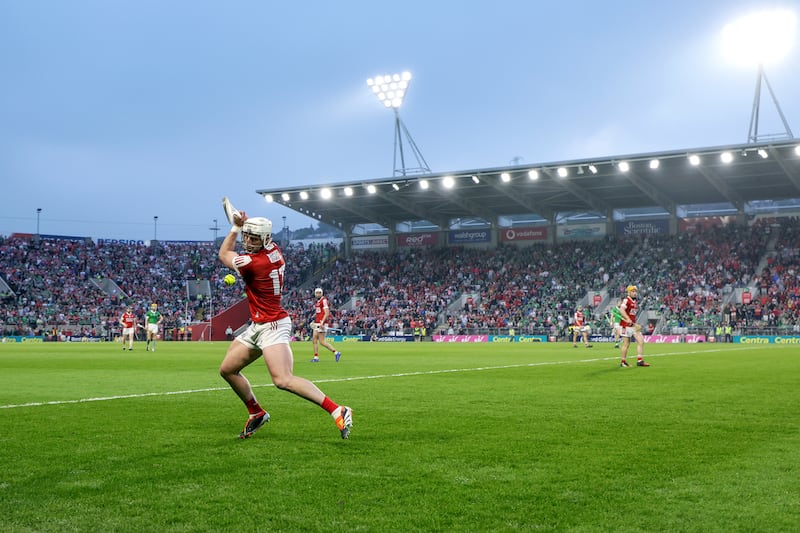After the replay Brian Cody spat the chicken bone out of his throat. The drawn final in 2014 had been a mesmerising match, the first time in history that both teams had amassed over 30 points in an All-Ireland final. In a glorious footnote, there had been 20 different scorers from play, as if scores were being handed out like taxi licenses in the boom. Everybody was enraptured. Except Cody.
It bothered him that the game had been such a carnival of attacking play. That his team’s defending had been so permissive. To him, it didn’t feel authentic. Hurling should be a Sunday dinner; this was some kind of burger deal with large fries, full of sweetness and empty calories.
“It was spectacular but maybe it was lacking in some of the things that are very, very important,” he said after Kilkenny had won the replay. “I would say for any team to concede as much as was conceded would not be what any team would be hoping to do.”
Kilkenny scored 1-5 less in the replay, Tipperary’s total was down by 11 points. The winner’s tackling stats went through the roof. In Cody’s mind, order had been restored. In another sense, though, nobody was in control any more. Scores no longer settled on matches like a soft mist, they arrived in hot monsoon downpours.
During their long peak, the four-in-a-row Kilkenny team were drivers of this climate change. In 2006 they became the first team to hit 20 points or more (excluding goals) in four consecutive championship matches; in 2008 they scored 3-30 against Waterford, setting a new point-scoring record for an All-Ireland final.
The rampant numbers, though, eventually ran them down too. When they scored 3-22 against Cork in the 2010 All-Ireland semi-final it was good enough for a 12-point win, pulling up; when they scored 3-22 against Galway in the 2012 All-Ireland final replay it amounted to an 11-point victory.
But in the 2014 drawn final 3-22 was only good enough for a thumps-up, thumbs-down, heart-in-the-mouth spin on Hawk Eye as Bubbles O’Dwyer’s long-range free almost produced a last-minute winner.

In Cody’s last three All-Ireland finals as Kilkenny manager they conceded 2-29, 3-25 and 1-31. His evangelical belief in tackling and defending was undiminished, but hurling had other gods now. Shooting on sight, shooting at every opportunity, shooting more than the other crowd, was the new faith.
In the Cork-Limerick game last Saturday night there were 80 shots in 79 minutes. In the Cork-Clare game a fortnight earlier there had been 84 shots. Is this new? When both All-Ireland semi-finals went to extra-time on a delirious weekend in 2018, Christy O’Connor calculated that there had been 214 shots in 197 minutes of play.
This runaway inflation in shooting and scoring has gripped the game for seven or eight seasons now. In 2016 1,043 points were scored in the championship, breaking the 1,000-point barrier for the first time. Two years later, from just two extra matches, 1,281 points were scored. Early in 2022 Gaelic Stats brought a report to GAA Congress which showed that a new record for scores per game in hurling had been set in each of the previous five seasons.
Last Saturday night Limerick scored 3-26, which was the biggest losing score in the history of the championship. What was the defending like? In total, two hooks, two clean blocks and a million body hits. In the modern game, players have become so adept at moving the ball out of contact, and teams have become so practised at creating overloads in possession, that hooks and blocks have been marginalised as instruments of resistance. Everyone is hunting turnovers now, and they’re hard to get too.
So, how has the game reached this state? Is there any end to the inflation? Is this what people want? Does anybody know what a safe winning total is any more?
It sounds quaint now, but when Clare were winning All-Irelands under Ger Loughnane in the 1990s their target was 20 points – goals and points combined. En route to the 1995 All-Ireland, they reached that number just twice. Two years later, with a much improved team, their average total was 21 points, excluding a first round massacre of Kerry.
The average winning score in 2010 was 2-20. In the last few seasons, during Limerick’s period of dominance, the number that gained traction as a viable winning score was 30 points. But before this weekend, 15 games have been played in this year’s championship, and 30 points would have been enough to win just six of them. Last Saturday night, Limerick reached that threshold with 12 minutes of normal time and four minutes of stoppage time remaining.
In this frenzy of shooting the age-old “insurance” point has been a collateral victim. Remember what that was like? If you were leading by a point at the end of a game, one more point would often be enough. If you were leading by a goal, one more point was the clincher.
What constitutes a safe lead now? In recent weeks Waterford led Tipperary by four points with two minutes of stoppage time remaining and the game ended in a draw; Wexford led Dublin by five points going into stoppage time and the game ended in a draw; Limerick led Cork by two points with less than two minutes of stoppage time remaining and ended up losing by two.
The biggest shift in the last two or three years has been a revival in goal scoring. When sweepers were in vogue in the middle of the last decade – in their original designation as a seventh defender – that role was primarily designed to cut out goals. Giving up points from long distances was a different issue.

The great goalscoring depression was not that long ago. The drawn 2016 league final contained no goal – even after extra-time – for just the fifth time in history. In the same year Cork and Tipperary met in the championship and failed to produce a goal for the first time in 115 years, or 74 meetings, whichever was more startling. Cork played a sweeper in their full-back line that day to spike Seamus Callanan’s guns. Imagine.
When the numbers were crunched at the end of the 2016 season the average goals per game in the championship had dipped below 2.5 for just the second time ever. A year later Galway won the All-Ireland without scoring a goal in their last four games, a run that stretched to four hours and 57 minutes.
They became just the sixth team in history to win the All-Ireland without scoring a goal in the final. Three years later, Limerick became the seventh. Their overall scoring profile was chillingly similar to Galway’s: in four of their five championship games in 2020 Limerick failed to score a goal too. Limerick had become the greatest mass producers of points in the history of the championship.
The average goals per game in 2020 was a measly 2.4, precisely the same as 2016. Five years ago Brian McDonnell, the analyst and coach, identified 28 factors that influenced match outcomes in the 2019 championship, to determine “win probability”. On that list, scoring more goals than the opposition only ranked at number nine.
All of that has changed. Nobody has won a game this year while scoring fewer goals than the opposition; in 34 games last year, it occurred just twice. The average goals per game last year was 3.55, a 32 per cent jump since 2020.
So far this year, there has only been one game with less than three goals, and eight games with four or more. The six goals that Cork and Limerick produced last Saturday night was the most in that fixture for 30 years, stretching back over 17 championship matches.
What happened? The introduction of the black card penalty in 2021 – to penalise cynical defending close to goal – has clearly been a massive factor. But teams also worked out how to circumvent extra defenders. In response to that, the sweeper, as it was originally conceived, blended into more fluid defensive systems. He was no longer camped on the D, like a bouncer.

Coaches realised that there wasn’t enough to be gained from under-resourcing their attack to over-load their defence. Teams were drilled to put up massive totals without engaging the other team’s sweeper.
From every angle the scoring boom is the outcome not just of environmental factors but evolutionary leaps. It feels counter-intuitive to describe hurling in numbers when the game has always been closer to art than science, but it is the only way to capture trends.
Until this century nobody had conceived of hurling as a game in which possession could be cultivated and managed. Uniquely among team sports, passing had never been prioritised. That has changed utterly. In the 2010 All-Ireland final there were 48 attempted handpasses; 10 years later there were 85. The number of stick-passes virtually trebled from 36 in the 2010 final to 104 in the 2020 final. Those numbers have continued to climb.
The biggest driver of scoring in hurling has been passing. The modern ball has facilitated that in ways that the old sliotar simply couldn’t. With its polyurethane core and shallow rims and enhanced bounciness and more reliable flight and greater ease of handling, the modern sliotar has allowed passing to exist and flourish.
The distance that the modern ball travels has also made a difference. Every team budgets for long-range scores now. At the start of the season Pat Ryan, the Cork manager, identified a greater scoring output from his half-backs as one of their performance targets. Last year, Diarmuid Byrnes became the highest scoring half-back in history.

But it would be wrong to over-state the impact of long-range shooting on the scoring trends. Of the 80 shots in the Cork-Limerick game, 52 were taken from inside the 45-metre line and of the 60 scores, fewer than a third came from outside that range. For the integrity of the spectacle that balance is crucial.
Shooting in bulk, though, is every team’s primary target now. Delivering puck-outs at lightning pace, before the other team is settled in their defensive set-up, is critical to that process. Derek McGrath, the former Waterford manager, highlighted in his Irish Examiner column that Nickie Quaid’s puck-outs took an average of 11 seconds against Clare; in the first half against Tipp he had it down to five seconds.
Cork’s first two goals last Saturday came nine seconds after a puck-out; for Cork’s match-winning goal, Patrick Collins transferred the ball to Shane Kingston about four seconds after a Limerick score. John Kiely was up in arms. For restarts that is the latest push-and-pull: how much speed are referees prepared to tolerate?
How about this weekend? Clare and Waterford produced the highest scoring game in the 2022 Munster championship; in their last five Munster championship meetings Cork and Tipp have shared 53 scores on average.
Buckle up. Don’t blink.





















